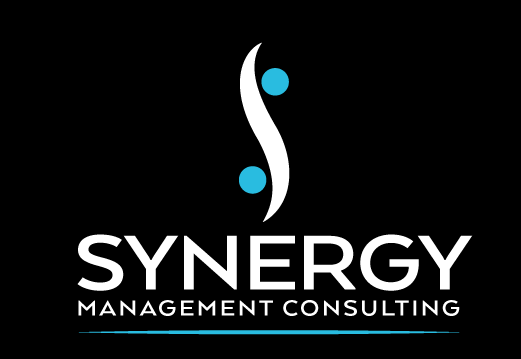Developing an ESG Strategy for 2023:
12 Key Points to Consider
As the business world continues to prioritize sustainability and social responsibility, developing a comprehensive ESG strategy has become increasingly important for companies of all sizes. ESG strategies outline a company’s commitment to environmental, social, and governance practices, and can help attract investment, improve reputation, and enhance long-term value.
Over the next 12 weeks we will expand on each point to give you a much deeper understanding of the next steps to take in developing your Environmental, Social, Governance Strategy.
Don’t miss a post in this series, please subscribe to our blog, or feel free to reach out to us to develop your customized strategic plan and road map.
Here are 12 key points to consider when developing an ESG strategy for 2023:
1. Start with a Clear Vision and Set Specific Goals:
Your ESG strategy should be aligned with your overall business goals and values. Begin by defining your vision for sustainability and social responsibility, and set specific, measurable, achievable, relevant, and time-bound (SMART) goals that align with this vision.
2. Engage with Stakeholders:
Engaging with stakeholders is crucial for developing an effective ESG strategy. This includes shareholders, employees, customers, suppliers, communities, and other stakeholders. Consider holding focus groups or surveys to gather input and feedback from these groups, and be sure to communicate your ESG efforts to them regularly.
3. Identify Key ESG Issues:
Consider the specific environmental, social, and governance issues that are most relevant to your company and stakeholders. This may include climate change, diversity and inclusion, human rights, supply chain sustainability, and more.
4. Conduct a Materiality Assessment:
A materiality assessment helps determine the ESG issues that are most important to your business and stakeholders. This can be done through a variety of methods, such as stakeholder engagement, expert consultation, and data analysis.
5. Develop a Plan of Action:
Once you have identified the key ESG issues, develop a plan of action to address them. This should include specific targets and milestones, as well as the resources and budget needed to achieve these goals.
6. Integrate ESG into Business Operations:
To truly make an impact, ESG should be integrated into all aspects of your business operations. This includes everything from how you source materials and energy, to how you engage with suppliers and communities.
7. Communicate Your ESG Efforts:
Communicating your ESG efforts is crucial for building trust and credibility with stakeholders. This includes disclosing your ESG performance and progress through annual reports, sustainability reports, and other communications channels.
8. Monitor and Report on Your ESG Performance:
Regularly monitoring and reporting on your ESG performance helps ensure that you are meeting your goals and allows you to make necessary adjustments. This can be done through internal tracking and external reporting, such as through a third-party assurance provider.
9. Collaborate with Others:
Collaborating with other companies, organizations, and industry groups can help accelerate progress on ESG issues and share best practices. Consider joining industry-specific sustainability organizations or partnering with other companies on sustainability initiatives.
10. Train and Educate Employees:
Ensuring that your employees are educated on ESG issues and have the skills and knowledge to support your ESG efforts is crucial. This may include training programs, workshops, and other resources.
11. Continuously Improve:
Your ESG strategy should be a living document that evolves as your company grows and as societal and environmental concerns change. Continuously assess and improve your ESG practices to ensure that you are making the greatest impact possible.
12. Seek Out Opportunities for Innovation:
Look for opportunities to innovate and drive positive change through your ESG efforts. This may include developing new products or services that have a lower environmental impact, or finding ways reduce the company’s environmental footprint, or a collaboration that encourages sustainability.
In conclusion, developing an effective ESG (environmental, social, and governance) strategy is crucial for businesses of all sizes in today’s increasingly sustainability-focused world. A comprehensive ESG strategy can help attract investment, improve reputation, and enhance long-term value. There are many factors to consider when developing an ESG strategy, including setting specific and measurable goals, engaging with stakeholders, identifying key ESG issues, conducting a materiality assessment, and developing a plan of action. Integrating ESG into business operations, communicating your efforts, and monitoring and reporting on performance are also important. Collaborating with others and training and educating employees can help ensure the success of your ESG efforts, and it is important to continuously assess and improve your practices. Seeking out opportunities for innovation can also help drive positive change through your ESG initiatives.
Effective ESG strategies require a long-term commitment and can be complex to implement, but the potential benefits for both the company and society make it a worthwhile effort. By following the steps outlined above, businesses can develop a comprehensive and impactful ESG strategy for 2023 and beyond. Overall, an ESG strategy can help companies align their operations with their values and goals, and contribute to a more sustainable and socially responsible future.
Remember: Over the next 12 weeks we will expand on each point to give you a much deeper understanding of the next steps to take in developing your ESG Strategy.
Don’t miss a post in this series, please subscribe to our blog, or feel free to reach out to us to develop your customized strategic plan and road map.
Ready to start a conversation about achieving breakthrough results?


